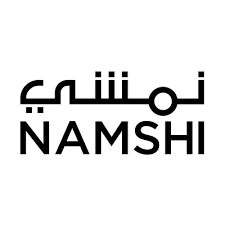Transformative Trends: Unveiling the Dynamic Landscape of E-commerce in the Gulf

The e-commerce market in the Gulf region has experienced significant growth and transformation over the past few years, reflecting a shift in consumer behavior and an increased focus on digitalization. Comprising countries such as Saudi Arabia, the United Arab Emirates (UAE), Qatar, Kuwait, Bahrain, and Oman, the Gulf Cooperation Council (GCC) states are witnessing a dynamic evolution in their e-commerce landscape.
Key Drivers of E-commerce Growth:
High Internet Penetration: The Gulf region boasts high internet penetration rates, making it conducive to the growth of e-commerce. With widespread internet access, consumers can conveniently browse, compare, and make online purchases.
Mobile Usage: The widespread adoption of smartphones has played a pivotal role in the surge of e-commerce. Mobile apps and responsive websites have made it easier for consumers to shop on the go, contributing to the overall digital shopping experience.
Youthful Population: The Gulf countries have a significant percentage of young and tech-savvy populations. This demographic is more inclined towards online shopping, driving the demand for e-commerce platforms.
Changing Consumer Behavior: Traditional shopping patterns are evolving, with consumers increasingly preferring the convenience of online shopping. Factors such as busy lifestyles and the desire for a broader product selection contribute to this shift.
Government Initiatives: Several Gulf countries are actively promoting digitalization, and governments are implementing initiatives to boost the e-commerce sector. This includes regulatory frameworks, digital payment infrastructure, and support for local e-commerce businesses.
Increased Digital Payments: The rise in digital payment solutions has further facilitated e-commerce transactions. Consumers are becoming more comfortable with online payments, fostering trust in the digital shopping process.
Prominent E-commerce Players:
Souq (an Amazon Company): Souq, acquired by Amazon in 2017, is a major player in the Gulf's e-commerce market. It offers a wide range of products, from electronics to fashion, catering to diverse consumer needs.
Noon: Launched in 2017, Noon.com is a homegrown e-commerce platform based in the UAE. It has rapidly expanded its offerings and serves as a prominent player in the Gulf's digital marketplace.
Namshi: Focused on fashion and lifestyle, Namshi is a popular online retailer operating in the UAE, Saudi Arabia, Kuwait, and other Gulf countries.
Carrefour: Carrefour, a well-known hypermarket chain, has a strong online presence in the Gulf. It provides a wide range of products, including groceries and electronics.
Challenges and Opportunities:
Challenges:
Last-Mile Delivery: Ensuring timely and efficient last-mile delivery remains a challenge, especially in sprawling urban areas.
Consumer Trust: Building and maintaining consumer trust is crucial. Addressing concerns related to security and the quality of products is paramount.
Opportunities:
Cross-Border E-commerce: There is immense potential for cross-border e-commerce, allowing Gulf consumers access to a global marketplace.
Digital Payment Innovation: Continued innovation in digital payment solutions can enhance the overall e-commerce experience and drive further adoption.
Future Outlook:
The Gulf's e-commerce market is poised for continued growth. With ongoing digitalization initiatives, a tech-savvy population, and a shift in consumer behavior, the region presents lucrative opportunities for both local and international e-commerce players. As infrastructure and regulatory frameworks continue to improve, the Gulf's e-commerce landscape is likely to evolve into a vibrant and competitive market.









